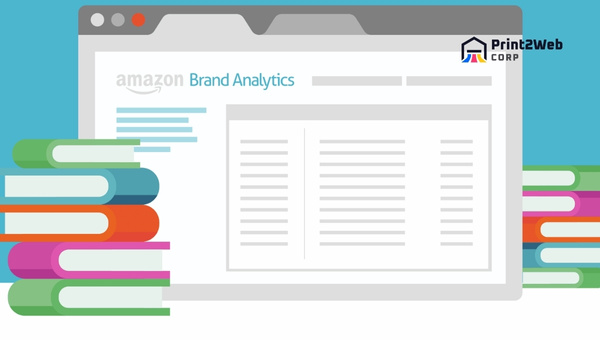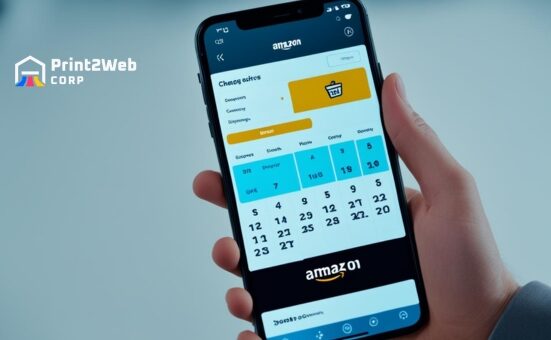Have you ever wondered what magic wand successful Amazon sellers wave to keep their products flying off the virtual shelves? They’ve got a secret tool up their sleeves, and it’s called Amazon Brand Analytics. Imagine having a crystal ball that tells you exactly what your customers want, how they shop, and what makes them click that ‘Buy Now’ button. That’s the kind of power we’re talking about!
What is Amazon Brand Analytics, you ask? At its core, it is an incredible treasure trove of insights specifically designed for brand owners on Amazon. By churning through mountains of data, it gives a detailed peek into customer preferences and behaviors. It can reveal which products are hot favorites, how often people search for certain items, and even predict shopping trends! Basically, if knowing your customers better than they know themselves sounds good to you – this tool is your new best friend.
Discover What’s In Store For You:
- Sparking Insights: Learn How to Read Your Customer’s Mind!
- Powerful Data at Your Fingertips: Boost Sales with Smart Analytics!
- Step-by-Step Guide: Effortlessly Navigate Amazon Brand Analytics!
- Make Informed Decisions: Use Data to Drive Your Marketing Strategy!
What Is Amazon Brand Analytics?
Amazon Brand Analytics is a powerful tool provided by Amazon to registered brand owners. It offers critical insights into how brands are performing on the marketplace, helping sellers understand their target audience better, improve product discoverability, and drive sales.

With access to such comprehensive data, it can significantly transform a seller’s journey on Amazon.
Understanding Why It Matters
- Better Decision Making: Through this service, sellers can make data-driven decisions rather than relying solely on intuition or outdated market trends.
- Enhanced Product Visibility: By understanding what consumers search for and prefer, sellers can optimize product listings to match customer needs and preferences, thus improving visibility.
- Competitor Analysis: While providing information about your product’s performance is valuable in itself, the real benefit lies in identifying competitors’ strategies and monitoring their performance consistently.
Understanding why Amazon Brand Analytics matters sets the foundation for how you make use of this tool as part of your business strategy.
How It Provides Insights
With Amazon Brand Analytics at hand, here’s what you’ll gain an insight into:
- Customer Search Terms: Get access to the most popular search phrases that customers use when shopping for your kind of products.
- Product Performance Metrics: Track how specific products perform concerning click rates and conversions as well as determine if certain keywords lead to more sales activity.
- Buyer demographic information: Understand who purchases your products with broad demographic reporting included with each sale linked back to your product listing.
By making sense of these valuable metrics, you will understand customer behavior in more depth than ever before. As a result, tailoring business strategies will become particularly targeted toward consumer desires that undoubtedly boost success overall.
Also Read: How to Check Amazon Gift Card Balance? – Quick, Easy Guide!
Who Can Use Amazon Brand Analytics?
Amazon Brand Analytics is certainly a game-changer for online vendors. However, not everyone gets to utilize this exceptional tool; there are certain restrictions and guidelines in place. Let’s get an understanding of the eligibility criteria.
To demystify who can access the Amazon Brand Analytics tool, Amazon sets three primary requirements:
- Professional Selling Plan: Any seller aspiring to use this analytics tool must have a subscription to Amazon’s Professional Selling Plan. This plan provides sellers with multiple tools and resources necessary for efficient sales performance on Amazon’s platform.
- Brand Registry: Sellers are required to be enrolled in the brand registry program initiated by Amazon. This program aims to protect branded products on the site and minimize counterfeit goods sales.
- A Vendor or an Agency: To avail of this analytical instrument, you must either be operating as a Vendor (a wholesaler selling products directly to Amazon) or as an agency representing a Vendor.
While these represent the key eligibility parameters, it is also worth mentioning that each platform comes with different versions and access levels based on geographic locations and specific conditions defined by Amazon itself. To use this excellent resource effectively and gain visibility into customer behavior across products and markets, I would strongly suggest understanding these nuances as they can significantly impact your business strategies.
How do you find the Amazon Brand Analytics Tool?

Understanding Amazon Brand Analytics and its multitude of features is just the first step; finding and utilizing this tool within your Seller Central account is equally important. Let’s delve into how you can locate this fantastic tool in your seller account:
Follow these steps to find Amazon Brand Analytics:
- Firstly, log into Amazon Seller Central with your approved professional seller credentials.
- Hover over the Performance tab found on top of the Seller Central home page.
- A dropdown menu should appear now. Look for the Brand Dashboard from that list and click on it.
- In the new screen, scroll through until you spot a section titled as Your Brand’s Performance & Opportunities, and under that, look for ‘Brand Health,’ ‘Customers,’ ‘Operations,’ etc.
- The last tab under ‘Customers’ will be ‘Get insights with brand analytics.’ This is where you need to click next!
By following these instructions, you will have successfully navigated through your Seller Central account and found the Amazon Brand Analytics tool. Now it’s time for you to unlock a treasure trove of data about your products and customers altering according to their online shopping behavior!
Let’s now start deciphering various aspects of this insightful tool! Hope this simple guideline assisted & increased both your knowledge plus confidence regarding Amazon Brand Analytics!
Delving Into Different Aspects of Amazon Brand Analytics Tools
The power of the Amazon Brand Analytics tool lies in its various insightful aspects. Let’s delve into each of them:

Amazon Search Terms Report
As a business, it becomes crucial to understand what your customers are looking for. This is where the role of search terms report comes into play.
The Role of Search Terms
When I use the Amazon Search Terms Report within the brand analytics tool, I am shown a plethora of data. It tells me exactly what my potential customers are typing into the search bar on Amazon. These search terms give me an inside look at their needs and wants. For instance, if my product is organic coffee beans and one common term used in searches is “fair trade,” this tells me that my audience values ethical sourcing practices. I can adjust my product descriptions accordingly.
Decoding Search Frequency Rank
Understanding the relevance of search frequency rank can transform your online sales game altogether. Essentially, this means understanding which products or services are being searched for most frequently on Amazon.
For example, if two terms related to your product consistently appear high on the rank list (say “environmentally friendly water bottles” or “BPA-free water bottles”), it indicates these popular areas should be highlighted in your marketing strategy.
Understanding Click Share and Conversion Share
Now let’s dissect the significance of click share and conversion share – two critical measures to understand customer behavior.
Clicked share refers to how often a specific ASIN (Amazon Standard Identification Number) was clicked after appearing in customers’ searches, while Conversion share defines what percentage of those clicks led to an actual purchase.
If these metrics demonstrate low performance, it might be time to reconsider your listing optimization.
Explaining Clicked ASIN
In practicality, every product sold on Amazon has an ASIN; think of it as its own unique identity card within this online retail universe! Gaining insight through this data significantly helps me to tailor my strategic plans.
When a potential buyer searches for a product and clicks on mine, it factors into the clicked ASIN data. Keeping an eye on these metrics allows me to see which of my items are getting more attention.
Importance of Product Title
The importance of a strong product title is paramount. It’s often the first thing potential buyers read when they see your product listing. If it’s convincing and contains relevant keywords that match their search queries, it can tremendously boost click-through rates and trigger purchase decisions.
In conclusion, by decoding every aspect of the Amazon Search Terms Report, I can effectively produce targeted strategies that translate into increased visibility and sales for my products on Amazon.
Market Basket Analysis
The Market Basket Analysis is an insightful component of Amazon Brand Analytics. It offers a strategic perspective on consumer purchasing behaviors, allowing sellers to understand what items customers commonly buy together.
The Ratio between Purchased ASIN & Purchased Title
The term ASIN stands for Amazon Standard Identification Number, a unique identifier assigned to each item sold on Amazon. Each ASIN corresponds to an item title, a name that describes what the product is. For instance, if I sell an eBook reader on Amazon, the unique code for that specific product model is its ASIN while the title could be “eBook Reader with Backlit Display”.
The Purchased Title reveals the exact name of the item customers ended up buying; it’s a barometer that measures customer intent against purchased products. The ratio between Purchased ASIN and Purchased Title shows the correlation between how an item was identified (ASIN) and what drove shoppers to purchase it (Title).
Understanding this ratio helps build compelling product titles that trigger purchases and potentially improve search rankings too.
Effectiveness Measurement by Combination%
Another crucial facet of market basket analysis is Combination%. This metric represents how often two products are bought together as a percentage of purchases where either one was bought.
For example, suppose I discover through analysis that 80% of buyers who bought my eBook reader also added a protective case for it in their shopping cart. This combination% indicates some intriguing insights – maybe these customers are looking for standalone value bundles or perhaps they prefer safeguarding their new gadget from day one!
Such insights could assist me in crafting better marketing campaigns or even developing new bundled deals tailor-made for my audience’s needs.
Effective utilization of Combination% adds immense value to market positioning strategy as it provides evidence-based ideas about cross-selling and up-selling opportunities by understanding consumer buying behavior deeply.
Also Read: Does Taco Bell Accept Apple Pay? Find Out Now!
Item Comparison and Alternate Purchase Behavior
When it comes to understanding customer behavior or preferences, Amazon Brand Analytics offers us two interesting bits of data under its ‘Item Comparison and Alternative Purchase Behavior’ category. They are ‘Compared ASIN’ and ‘Compared %’.
Significance of Compared ASIN & Compared %
Compared ASIN refers to the product identifiers of items that customers compared to yours before making or not making a purchase decision. On the other hand, compared % shows what percentage of times your product was chosen over others in such comparisons.
For instance, if your product is a blue laptop bag and the compared ASIN is that of a red laptop bag from another brand, you begin realizing how customers are comparing similar products based on color preference perhaps. You might find that although people are looking at both products, they may be choosing one over the other more frequently which is reflected in the comparison%.
Understanding these two aspects can offer great insights into what customers desire or require when it comes to your product category. It could be color options as in our example above or factors like size, design elements, durability, etc depending on the kind of products you deal with.
Ultimately this information can help you consider certain changes or improvements in your product offerings in response to what customers seem to prefer during their shopping journey on Amazon.
The Role Immunize between Purchased ASIN & Purchased %
The other essential part under this category relates to Purchased ASIN and Purchased %. These signify not just what alternative products were purchased instead of yours but also how often such alternatives were picked up by shoppers.
If we look closer at these analytics data points, they dynamically tell tales about why buyers might opt for some goods over others. For instance: does a cheaper price point influence choice? Or does an alternate item have added features that make it more appealing?
Digging deep into these aspects gives you clues about consumer buying instincts. It’s a window into what drives customers and how you might adapt your selling strategies accordingly.
For example, if the Purchased % of an item with free shipping is significantly higher than yours which has shipping charges, it might be time to rethink your logistical costs and pricing structures based on these insights.
Amazon Brand Analytics provides this valuable feedback which helps sellers make informed decisions about their products and business strategies on the Amazon platform thus empowering them to cater more effectively to their target markets.
What Are the Benefits of Using Amazon Brand Analytics?
Among the myriad advantages that come from using Amazon Brand Analytics, three stand out the most – it empowers your keyword research, refines your marketing strategies, and helps you understand audience preferences.

Improving Keyword Research
Amazon Brand Analytics is like a goldmine when it comes to enhancing your keyword research. At first glance, keywords may seem simple; just words or phrases that people use to search for products on Amazon. However, behind these simple terms lies a wealth of information.
The analytics tool aids me in understanding which keywords drive traffic to my product’s page. It allows me to keep a pulse on customer search behavior by showing what customers often look for before landing on my product listing. This insight is crucial as I can tailor my content and SEO strategy towards those highly searched terms.
Moreover, I love how this tool provides a ranking system based on keyword searches. This way, I know if the competition is steep for certain keywords or if there are underutilized opportunities waiting to be seized.
Refining Marketing Strategies
Imagine being equipped with information on customer buying practices – their preferences and buying behavior! It completely transforms how I approach my marketing strategy.
With Amazon Brand Analytics’ advanced A/B testing capability, I can compare different versions of product listings to check what resonates with shoppers better. The split testing data also show what kind of titles or images are compelling enough for customers leading them to click ‘buy now’.
Furthermore, this tool identifies whether the handful percentage of users who clicked on my item converted into sales or not and why so—removing a lot of guesswork from crafting marketing campaigns.
Understanding Audience Preferences
Last but importantly no amount of data-driven insights would matter without understanding your audience’s preferences. Through its demographics report feature, Amazon Brand Analytics offers an overview of shopper’s age range and gender among others—it’s almost similar as to knowing the people walking into a physical store. This data is incredibly useful in curating product listings and advertisements that would capture their attention.
Also, I get valuable visibility into customer’s buying journey—what items they viewed, what they put in their shopping cart and even what ended up as their final purchases.
What greatly astounded me was its Repeat Purchase Behavior report. It’s an intelligent way of measuring product satisfaction rate; if a buyer repeatedly purchases my products, it indicates a high satisfaction level which I can leverage for building trust among potential customers.
All of these customer insights help me better understand my audience – Who are they? What do they need? How can I fulfill that need? After all, understanding one’s audience is the bedrock of any successful trade strategy!
Also Read: Dropshipping vs. Amazon FBA: Ultimate Showdown for Entrepreneurs
FAQs
What is brand analysis in Amazon?
Brand analysis in Amazon, also known as Amazon Brand Analytics, is a powerful tool provided by Amazon. It gives brand owners detailed insights into customer behavior, allowing them to optimize product listings and improve sales.
What are Amazon analytics?
Amazon analytics refers to a set of tools provided by Amazon under Seller Central that helps sellers understand buyer behavior and trends. They equip the sellers with data-driven decisions that can enhance their overall selling strategy.
What is the meaning of brand analytics?
Brand analytics involves analyzing a brand’s performance using relevant metrics and data. In the context of Amazon Brand Analytics, it refers to understanding customer buying habits, popular products, keyword performance and the demographic details of your customers.
What are the benefits of brand analytics?
The beauty of brand analytics lies in its power to provide crucial insights into customer choices and preferences. It enables sellers to do targeted marketing based on real-time data, improving their keyword research capability, refining their marketing strategies based on trends and understanding audience preferences better.
Also Read: Banish Bad Reviews on Amazon: A Seller’s Must-Know Guide
Conclusion
Amazon Brand Analytics is essentially a game-changer when selling on Amazon. As I use this tool, I can better understand customer behaviors, refine my marketing strategies, and improve keyword research. It also offers me detailed insights into what customers are searching for and how various products are performing.
Knowing who my buyers are, their preferences, and their purchase behavior further aids in strategizing my business plan. This analytical tool gives me the opportunity to boost visibility and increase conversions effectively.







